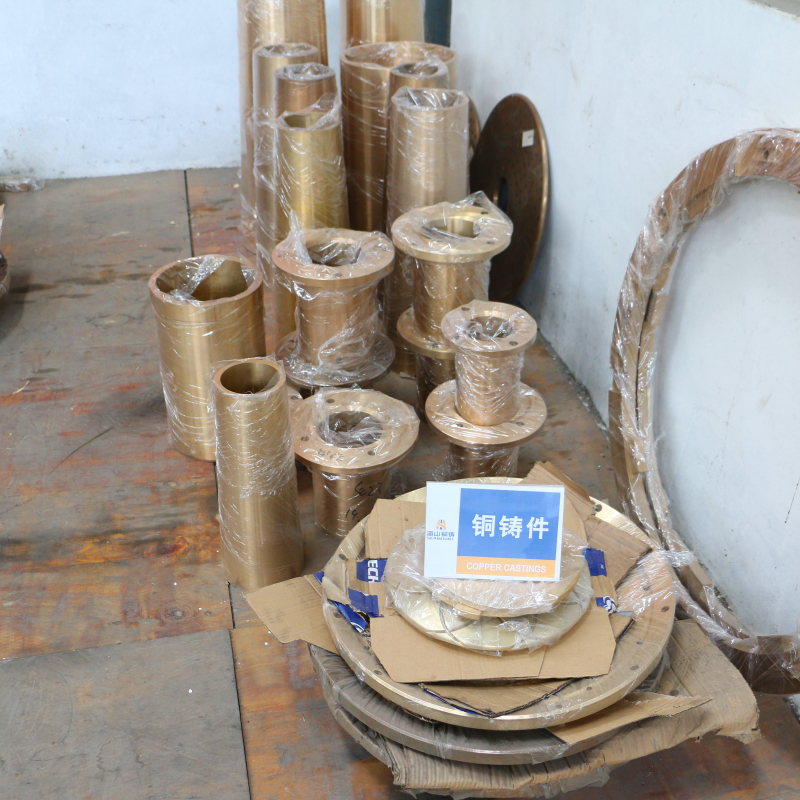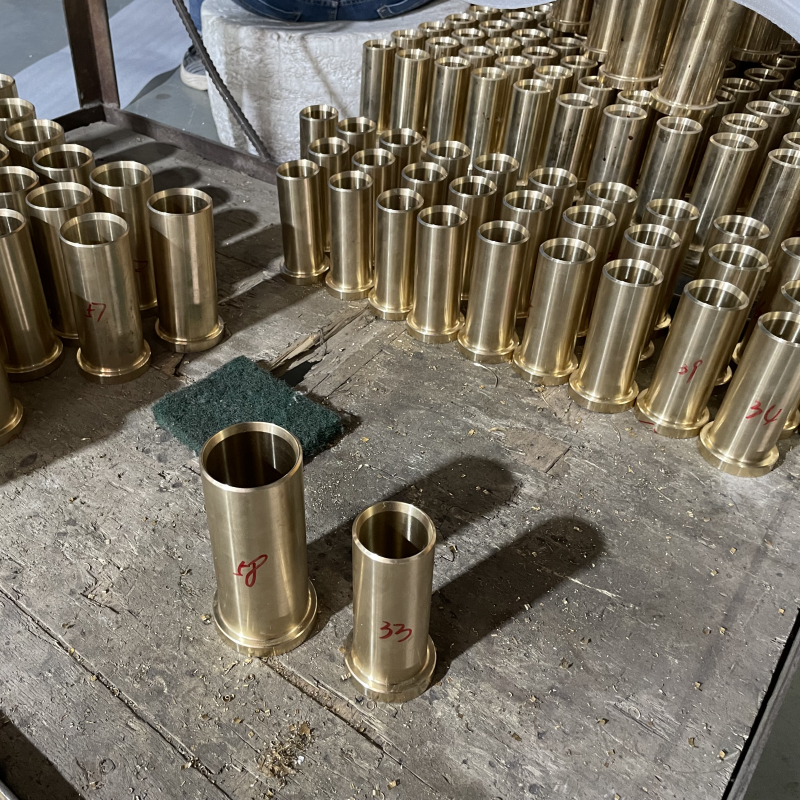Plastics and copper alloys have significant differences in terms of material properties, application scenarios, and performance. The following are their main differences:
Plastic
Material Composition: Plastics are organic materials composed of polymers, usually made from petrochemicals. Common plastics for mechanical use include nylon (PA), polyacetal (POM), polytetrafluoroethylene (PTFE), and others.
Density: Relatively light, density usually between 0.9-2.2 g/cm³, suitable for lightweight needs.
Strength and hardness: generally low strength, especially compared to metallic materials. Although there are reinforced plastics, their hardness and tensile strength are not as good as metals.
Thermal conductivity: poor thermal conductivity, usually used as an insulation material with very low thermal conductivity.
Electrical conductivity: It is an insulator, almost non-conductive, suitable for use as an insulating material in electrical equipment.
Coefficient of friction: plastics have good self-lubrication and low coefficient of friction, suitable for application in friction parts (e.g. sliders, bearings), especially where lubrication is not required. Despite their better wear resistance, they are inferior to metals in high load, high friction environments.
Corrosivity: Plastics have very good corrosion resistance and can resist acids, alkalis and most chemicals, making them suitable for use in corrosive environments.
High Temperature Resistance: High temperature resistance is limited, most plastics have a temperature resistance range of 100°C to 300°C. Excessive temperatures will cause the material to soften or decompose.
Processability: Processing methods are varied, injection molding, extrusion, thermoforming and other processes can easily achieve complex shapes. Plastic is highly processable and suitable for mass production and lightweight design.
Application Scenario: Due to its light weight, corrosion resistance, good vibration damping and insulation, plastics are commonly used for lightweight structural parts, insulation materials, corrosion-resistant parts, vibration dampers and so on. For example, interior parts and housings in automobiles, insulating parts in electrical equipment, etc.

Copper Alloy
Material: Copper alloy is a metal material formed by adding different alloying elements (e.g. zinc, tin, lead, aluminum, etc.) based on copper. Common copper alloys include brass (copper-zinc alloy), bronze (copper-tin alloy), and beryllium copper.
Density: Higher density, generally between 7-9 g/cm³, much heavier than plastic, suitable for parts requiring high quality and strength.
Hardness: high strength and hardness, can withstand greater mechanical stress. Bronze and brass are often used in mechanical components for high strength and high friction environments.
Thermal conductivity: excellent thermal conductivity, commonly used as heat sinks, heat exchangers and other mechanical equipment in the thermal conductivity of parts.
Electrical conductivity: excellent electrical conductivity, brass, beryllium copper, etc. commonly used in electrical equipment in the conductive components, such as brushes, contact parts.
Wear resistance: copper alloys, such as bronze, lead bronze, has excellent wear resistance, excellent performance in high load and high friction conditions, widely used in heavy machinery, bearings, bushings and other components.
Corrosion resistance: Copper alloys are also highly resistant to corrosion, especially in environments such as seawater and chemicals. Bronze and brass perform well in wet or corrosive environments, but compared to plastics, it has slightly weaker corrosion resistance in certain strong acid and alkali environments.
High temperature resistance: The temperature resistance of copper alloys is much higher than that of plastics, and they can be used in high-temperature environments. Bronze and brass can withstand temperatures as high as 500°C or higher, and are suitable for use in high-temperature, heat-exchange applications.
Application Scenario: Copper alloys are mostly used for load bearing parts, bearings, heat conducting and electrically conductive parts, and corrosion resistant parts due to their high strength, wear resistance, and heat conductivity. For example, copper bushings and bearings in mechanical equipment, and contact parts in electrical equipment.

| Previous:What are the advantages and disadvantages of color flaw detection for copper bushings? | Next:What is the difference between aluminum bushings and copper bushings? |




 Copyright © 2022
Copyright © 2022